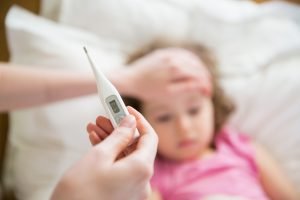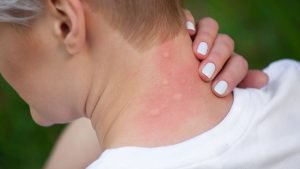Summary
Dengue is a serious and potentially fatal disease, also known as “breakbone fever,” caused by a virus transmitted through four related species of mosquitoes. The name “dengue” originates from the Swahili phrase “ka dinga pepo,” meaning “a cramp-like seizure caused by an evil spirit.” The virus spreads through the bites of Aedes aegypti and Aedes albopictus mosquitoes, which thrive in tropical and subtropical regions across the globe.
Symptoms of dengue resemble those of the flu, including fever, headache, joint and muscle pain, dizziness, and occasional bleeding from the nose or gums. Severe cases can escalate to dengue hemorrhagic fever or dengue shock syndrome, leading to dangerous complications like serious bleeding, low blood pressure, and potential organ failure, which require urgent medical attention.
Currently, there is no cure for dengue, so treatment focuses on managing symptoms. This includes reducing fever, relieving pain, and supporting the immune system. Patients are encouraged to rest, stay hydrated, and, in severe cases, receive hospital care to prevent complications.
Table of Contents
Symptoms of Dengue

Typically, dengue symptoms begin to appear four to six days after the initial infection. These symptoms can persist for up to 10 days and include:
- Sudden high fever. A rapid and severe fever is often the first sign of dengue infection.
- Rash. A characteristic rash usually develops two to five days after the fever begins, often spreading across the body.
- Severe headache. Intense headache pain is a common and notable symptom.
- Severe muscle and joint pain. This “breakbone” pain is distinctive of dengue and can be debilitating.
- Fatigue. Patients often experience extreme tiredness and weakness.
- Pain behind the eyes. This unique pain is often worsened by eye movement.
- Dizziness. Patients may feel lightheaded, particularly with fever.
- Vomiting. Nausea and vomiting are common, especially in more severe cases.
- Mild bleeding from the nose and gums. Minor bleeding can occur in some patients due to blood platelet reduction.
- Easy bruising. The body may bruise easily, another sign of low platelet count.
These symptoms are sometimes mistaken for flu or other viral infections, which can delay diagnosis. Without prompt treatment, dengue can lead to severe complications like dengue hemorrhagic fever or dengue shock syndrome, both of which can be life-threatening due to severe bleeding, organ damage, and circulatory collapse.
Types of Dengue
There are three main types of dengue: dengue fever (DF), dengue hemorrhagic fever (DHF), and dengue shock syndrome (DSS).
Dengue Fever (DF)
Dengue fever primarily affects adolescents and adults, although it can occur in individuals of any age. The symptoms are as follows:
- Sudden fever lasting 3 to 7 days. The fever often appears suddenly and can reach high temperatures.
- Severe headache, especially behind the eyes. Eye pain, worsened by movement, is a characteristic symptom.
- Joint and muscle pain. This is particularly pronounced in the knees and elbows, often called “breakbone fever.”
- Unpleasant taste in the mouth. Patients often report a metallic taste.
- Loss of appetite, vomiting, and diarrhea. These digestive symptoms are common and can lead to further dehydration.
- Rash on the arms and legs. A rash may appear, often spreading from the extremities.
- Intense itching. Itching is common, particularly as the rash heals.
- Nose and mouth bleeding. Mild bleeding, a sign of lowered platelets, may occur.
- Extreme fatigue and weakness. The illness often leaves patients feeling very weak and tired.
Dengue Hemorrhagic Fever (DHF)
Dengue hemorrhagic fever is a severe complication of dengue fever and commonly occurs in individuals who have had dengue before. While initial symptoms are similar to those of dengue fever, after a few days, the patient may start to experience bleeding from the nose or mouth and bruising easily due to reduced platelets.
If untreated, DHF can progress rapidly and may become life-threatening. Without prompt medical care, this condition can result in death within 24 hours due to massive bleeding and circulatory failure.
Dengue Shock Syndrome (DSS)
Dengue shock syndrome is often a progression from DHF and is the most severe form of dengue. It is marked by the following symptoms:
- Severe abdominal pain. Persistent and worsening abdominal pain is a critical sign.
- Vomiting blood. This severe symptom is an indication of internal bleeding.
- Irritability or restlessness. Patients may become increasingly anxious or agitated.
- Frequent changes in body temperature. Fever may alternate with drops in temperature, indicating worsening shock.
- Low blood pressure. Severe hypotension occurs as blood volume and circulation drop.
DSS requires immediate medical intervention, as it can quickly lead to organ failure and death. Managing fluids, monitoring blood pressure, and careful supportive care are essential to prevent fatal outcomes.
Diagnostic Procedures for Dengue
Early diagnosis of dengue is crucial for effective management, as prompt detection helps reduce the risk of severe complications. Here are the primary diagnostic methods used for identifying dengue:
- Clinical assessment. In dengue-prone areas or during outbreaks, healthcare providers may initially diagnose dengue based on symptoms such as high fever, severe headache, joint pain, rash, and bleeding tendencies. Clinical diagnosis is especially common when laboratory resources are limited, but further testing is usually recommended to confirm the diagnosis.
- Blood tests. Laboratory blood tests are essential for confirming dengue infection and typically include the following:
- NS1 antigen test. This test detects the NS1 protein produced by the dengue virus and is effective within the first few days of symptom onset. It is highly specific to dengue and can provide early confirmation.
- PCR (Polymerase Chain Reaction) test. PCR tests identify the virus’s genetic material and are highly accurate, especially within the first five days of infection. PCR is valuable for confirming the specific dengue serotype but may not be available in all settings due to its technical requirements.
- IgM and IgG antibody tests. These tests detect antibodies the immune system produces in response to dengue. The IgM test is usually effective from day 4 to day 10 of illness, while the IgG test can indicate a past infection. Combined, these tests help confirm an active or recent dengue infection.
- Complete blood count (CBC). A CBC is a routine blood test that provides valuable insights into a patient’s condition. In dengue, low platelet count (thrombocytopenia) and reduced white blood cell count are common findings. Monitoring platelet levels is critical, as a significant drop may indicate dengue hemorrhagic fever, a more severe form of the disease.
- Liver function tests. Dengue infection can affect the liver, leading to elevated liver enzymes. Liver function tests help assess the extent of liver involvement and monitor any potential liver damage, which is particularly useful in severe dengue cases.
Quick and accurate diagnosis allows for appropriate treatment, which is essential in preventing severe complications. Laboratory tests, particularly blood tests, are the gold standard for confirming dengue, while clinical assessment provides rapid identification in outbreak situations.
Complications of Untreated Dengue
If left untreated, dengue can lead to serious and potentially life-threatening complications, especially as the virus progresses and affects multiple organs. Here are the major complications that can arise from untreated dengue:
- Severe dehydration. Dengue often causes high fever, vomiting, and severe diarrhea, leading to rapid fluid loss. Without proper hydration, severe dehydration can occur, affecting organ function and potentially leading to shock.
- Dengue hemorrhagic fever (DHF). This severe form of dengue is characterized by increased vascular permeability, low platelet count, and spontaneous bleeding. Symptoms include bleeding from the nose, gums, and internal organs, which can lead to shock and circulatory collapse if untreated.
- Dengue shock syndrome (DSS). DSS is the most severe and life-threatening form of dengue, marked by dangerously low blood pressure and poor circulation. This complication often follows DHF and, without rapid medical intervention, can result in organ failure and death.
- Liver damage. Dengue can impact liver function, leading to elevated liver enzymes and, in severe cases, liver inflammation or failure. Patients with existing liver conditions are at even higher risk, as dengue can exacerbate liver complications.
- Organ failure. Severe dengue can lead to widespread organ involvement, affecting the heart, lungs, liver, and kidneys. When vital organs are compromised, the risk of multi-organ failure increases, which can be fatal if untreated.
- Neurological complications. In rare cases, dengue can lead to neurological issues, such as encephalitis (inflammation of the brain), seizures, or even coma. These complications typically occur in severe cases and can have long-lasting effects on the patient’s health.
Untreated dengue can rapidly escalate to life-threatening complications, making early detection and prompt medical care essential. Effective management of symptoms and close monitoring of blood and organ health are critical to prevent severe outcomes and support full recovery.
Causes of Dengue

Dengue is caused by the dengue virus, which spreads primarily through the bites of Aedes aegypti and Aedes albopictus mosquitoes, the main carriers of this virus. These mosquitoes are active during the day, particularly in the early morning and late afternoon, and thrive in tropical and subtropical climates where stagnant water provides ideal breeding grounds.
When an infected mosquito bites a person, it transmits the virus through its saliva, allowing the virus to enter the bloodstream. Importantly, if a mosquito bites a person who already has the dengue virus in their blood, it can then become infected and transmit the virus to others it bites afterward. This cycle of infection and transmission sustains the spread of dengue in populated areas.
It is also essential to understand that people can contract dengue more than once because there are four distinct types of the dengue virus (serotypes DENV-1, DENV-2, DENV-3, and DENV-4). A person infected with one type gains lifelong immunity to that specific type but not to the others. Subsequent infections with a different serotype can lead to more severe forms of the disease, such as dengue hemorrhagic fever or dengue shock syndrome, due to a phenomenon known as antibody-dependent enhancement (ADE).
Prevention of Dengue

Currently, there are no approved medications or vaccines to prevent dengue. The primary preventive measure is to avoid mosquito bites from those carrying the virus. To minimize the risk of mosquito bites, especially in areas with a dengue outbreak, the following precautions are recommended:
- Wear protective clothing. Dress in long pants, socks, and long-sleeved shirts, especially in high-risk areas.
- Use mosquito repellent. Apply mosquito repellent lotion on exposed skin, choosing products effective against Aedes mosquitoes.
- Sleep under a mosquito net. Use a mosquito net when sleeping, particularly in mosquito-prone areas.
- Use insecticides in mosquito-prone areas. Spray insecticides in rooms or outdoor areas with heavy mosquito activity.
- Install window and door screens. Use screens on windows and doors to prevent mosquitoes from entering the home.
- Avoid areas with stagnant water. Mosquitoes breed in still water, so avoiding such areas can reduce exposure.
- Clean gutters and surrounding areas. Regularly clear gutters and drains around the home to prevent water accumulation.
- Empty or cover water containers. Cover water storage containers and empty unused containers where water can collect, such as buckets and basins.
- Change water in flower vases. Replace water in flower vases regularly to prevent mosquito breeding.
- Avoid mosquito-heavy areas, especially at night. Limit exposure to areas with high mosquito populations, particularly after sunset when mosquitoes are most active.
By implementing these preventive measures, individuals can significantly reduce their risk of dengue, particularly in regions prone to outbreaks. Regular cleaning and reducing stagnant water sources are crucial steps to prevent mosquito breeding and control dengue spread.
Risk Factors for Dengue
Experts estimate that approximately 390 million people are affected by the dengue virus each year, with around 96 million of these cases developing into full-blown dengue with noticeable symptoms.
Living in the following regions, where dengue is widespread, significantly increases the risk of contracting the virus:
- Africa. Dengue is prevalent in many tropical and subtropical regions across the continent.
- Central and South America. Most countries in these regions have dengue risk, with the exception of Chile, Paraguay, and Argentina, where cases are rarer.
- Southeast Asia. This region has one of the highest incidences of dengue due to favorable climates and high mosquito activity.
- Southern China. The southern provinces of China experience dengue outbreaks, especially during warmer months.
- Taiwan. Dengue cases are common, particularly in southern parts of Taiwan.
- The Caribbean. Most Caribbean countries report dengue cases, with Cuba and the Cayman Islands being less affected.
- India. Dengue is widespread across the country, particularly during and after monsoon seasons.
- The Pacific Islands. Dengue outbreaks are frequent in many Pacific Island nations, largely due to the tropical climate.
- Other tropical areas and countries. Other tropical and subtropical regions around the world, including certain parts of Australia and the Middle East, also face dengue risks.
The geographic spread of dengue reflects the distribution of Aedes mosquitoes, which thrive in warm, humid environments with frequent stagnant water sources. Travelers and residents in these areas are advised to take preventive measures to minimize exposure to mosquito bites and reduce dengue risk.
Dengue FAQs
Here are answers to some common questions about dengue, covering its causes, symptoms, prevention, and treatment.
- What is dengue?
Dengue is a viral infection spread by Aedes mosquitoes, primarily Aedes aegypti and Aedes albopictus. It causes flu-like symptoms and, in severe cases, can lead to life-threatening complications such as dengue hemorrhagic fever or dengue shock syndrome. - How is dengue transmitted?
Dengue is transmitted through the bite of an infected mosquito. When a mosquito bites a person infected with the dengue virus, it carries the virus and can transmit it to others through its bites. - What are the symptoms of dengue?
Common symptoms include high fever, severe headache, joint and muscle pain, pain behind the eyes, nausea, vomiting, rash, and mild bleeding. Severe cases can lead to dangerous symptoms, such as severe bleeding, low blood pressure, and organ failure. - Who is at higher risk of contracting dengue?
People living in or traveling to areas with a high prevalence of dengue—tropical and subtropical regions—are at higher risk. Children, the elderly, and those with weakened immune systems may also be more vulnerable to severe dengue complications. - Can dengue be contracted more than once?
Yes, there are four different dengue virus types (DENV-1 to DENV-4), and infection with one type only provides immunity to that specific type. Subsequent infections with different types increase the risk of severe complications due to antibody-dependent enhancement. - Is there a treatment or vaccine for dengue?
Currently, there is no specific antiviral treatment for dengue. Treatment focuses on relieving symptoms through rehydration, pain management, and monitoring. There is a vaccine available in some regions for people with previous dengue infections, but it is not universally recommended for all populations. - How can I prevent dengue?
Dengue prevention focuses on avoiding mosquito bites. Use insect repellent, wear long-sleeved clothing, sleep under mosquito nets, use screens on windows and doors, and eliminate standing water around the home, as these are breeding grounds for Aedes mosquitoes. - How soon do dengue symptoms appear after a mosquito bite?
Dengue symptoms typically appear 4 to 10 days after being bitten by an infected mosquito. This period, known as the incubation period, varies but usually falls within this range. - Can dengue be spread from person to person?
No, dengue cannot spread directly from person to person. It is only transmitted through the bite of an infected mosquito. - What should I do if I suspect I have dengue?
If you suspect you have dengue, seek medical attention promptly. Rest, stay hydrated, and avoid taking NSAIDs (like ibuprofen or aspirin), as they can increase bleeding risk. A healthcare provider can confirm dengue through blood tests and guide you on symptom management.


